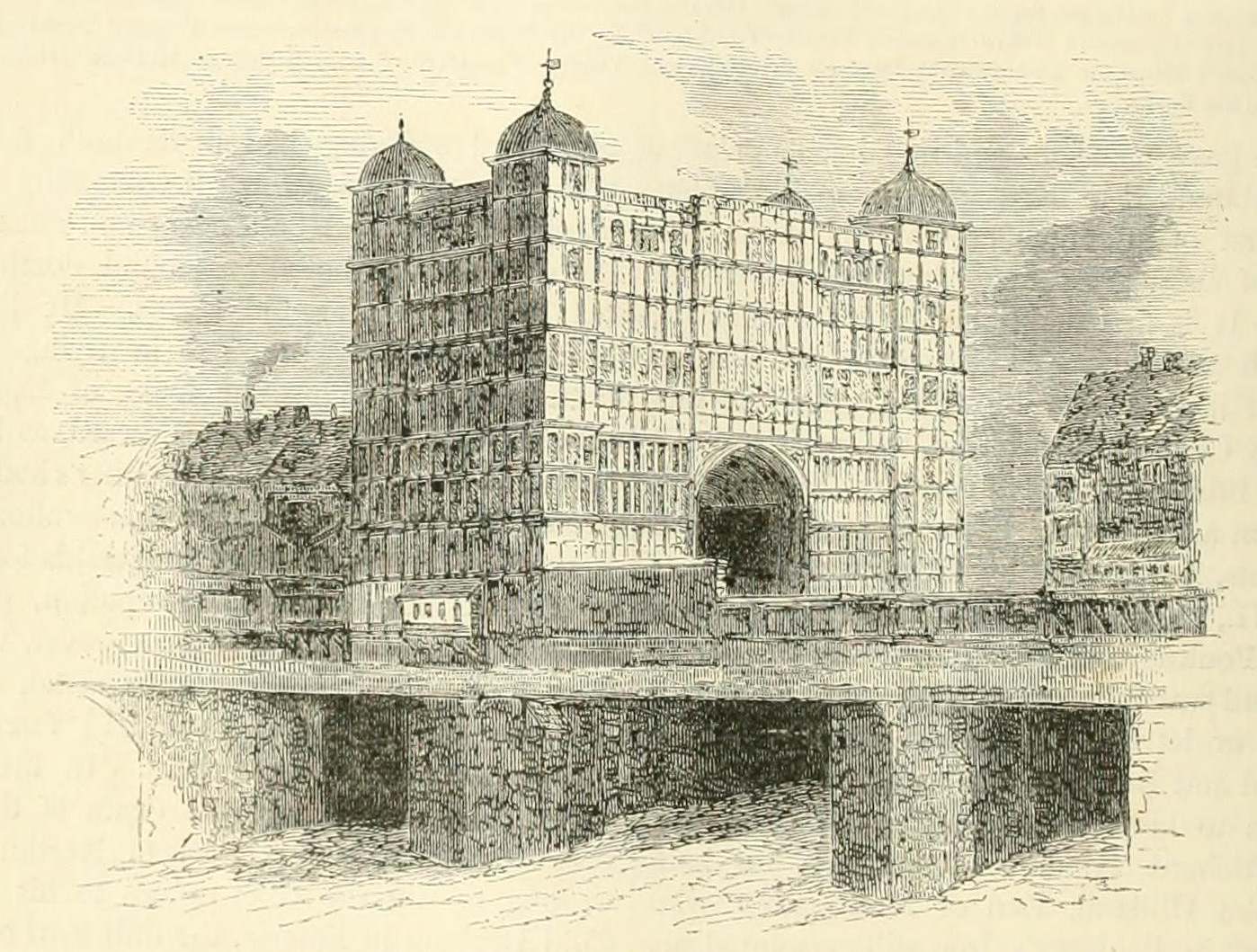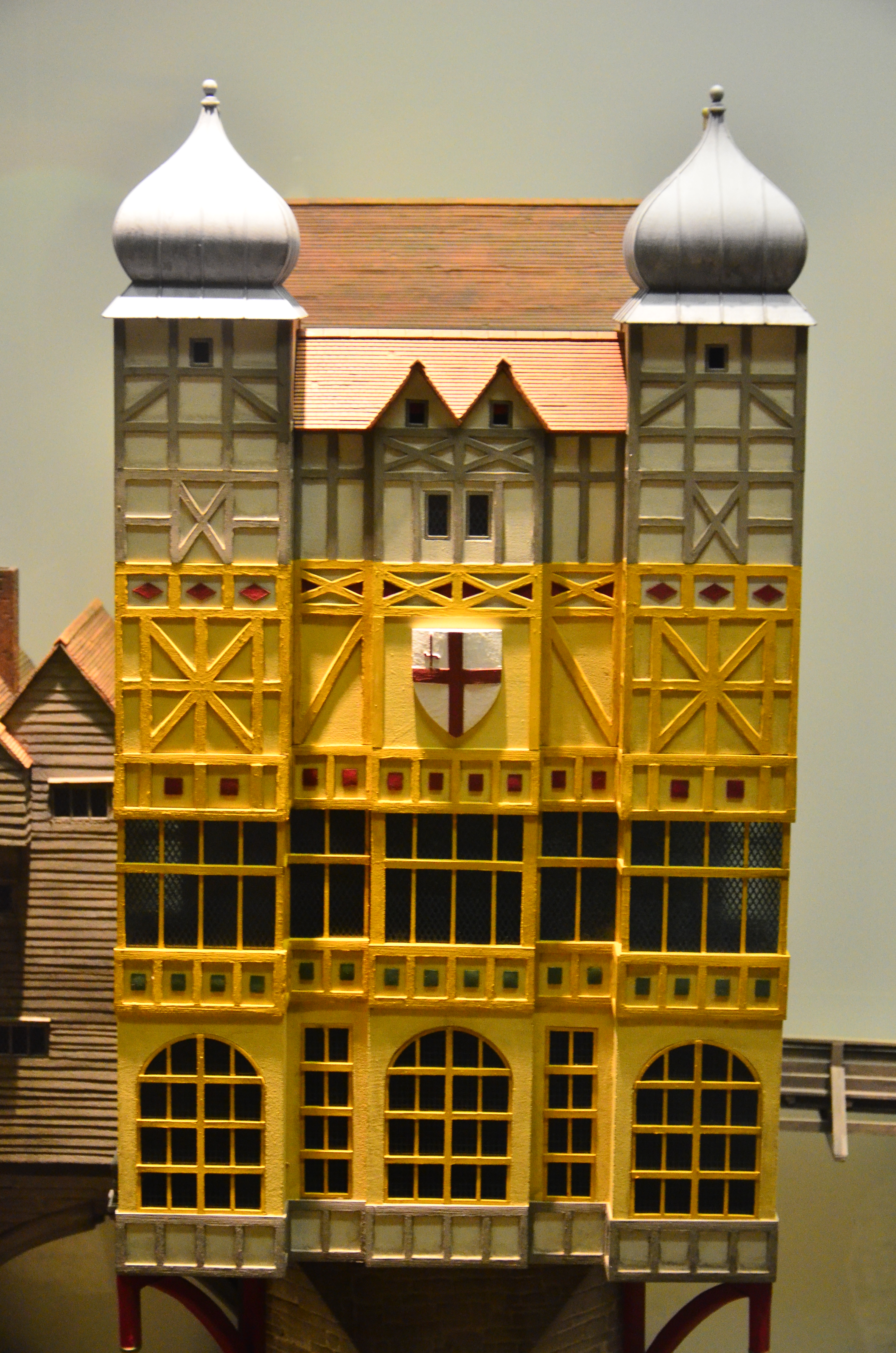Nonsuch House on:
[Wikipedia]
[Google]
[Amazon]
 Nonsuch House was a four-storey house on
Nonsuch House was a four-storey house on
 Nonsuch House's archway straddled the bridge. The house was in the centre of the bridge with its principal front facing towards the
Nonsuch House's archway straddled the bridge. The house was in the centre of the bridge with its principal front facing towards the
History of the Old London Bridge
London Bridge’s lost Nonsuch House
{{coord, 51.5075, -0.0871, type:landmark_region:GB-SWK, display=title Prefabricated houses Houses completed in 1579 Former houses in the City of London 1579 establishments in England 1757 disestablishments in England 1757 disestablishments in Great Britain
 Nonsuch House was a four-storey house on
Nonsuch House was a four-storey house on London Bridge
Several bridges named London Bridge have spanned the River Thames between the City of London and Southwark, in central London. The current crossing, which opened to traffic in 1973, is a box girder bridge built from concrete and steel. It re ...
, completed in 1579. It is the earliest documented prefabricated building
A prefabricated building, informally a prefab, is a building that is manufactured and constructed using prefabrication. It consists of factory-made components or units that are transported and assembled on-site to form the complete building.
Hist ...
. Originally constructed in the Netherlands, it was taken apart and shipped to London in pieces in 1578, where it was reassembled, with each timber being marked so that it could be reconstructed correctly. The name ''Nonsuch'' may have referred to Henry VIII
Henry VIII (28 June 149128 January 1547) was King of England from 22 April 1509 until his death in 1547. Henry is best known for his six marriages, and for his efforts to have his first marriage (to Catherine of Aragon) annulled. His disa ...
's now vanished Nonsuch Palace
Nonsuch Palace was a Tudor royal palace, built by Henry VIII in Surrey, England; it stood from 1538 to 1682–83. Its site lies in what is now Nonsuch Park on the boundaries of the borough of Epsom and Ewell in Surrey and the London B ...
outside London; it meant there was "none such" anywhere else, that it was an unequalled paragon of its kind.
All houses on London Bridge were pulled down in 1757.
Description
 Nonsuch House's archway straddled the bridge. The house was in the centre of the bridge with its principal front facing towards the
Nonsuch House's archway straddled the bridge. The house was in the centre of the bridge with its principal front facing towards the Southwark
Southwark ( ) is a district of Central London situated on the south bank of the River Thames, forming the north-western part of the wider modern London Borough of Southwark. The district, which is the oldest part of South London, developed ...
end, the principal approach to the city of London
The City of London is a city, ceremonial county and local government district that contains the historic centre and constitutes, alongside Canary Wharf, the primary central business district (CBD) of London. It constituted most of London f ...
from the south. Occupying the place of an entrance to the city, it was elaborately carved with ornate decorations on its east and west Dutch stepped gable
A stepped gable, crow-stepped gable, or corbie step is a stairstep type of design at the top of the triangular gable-end of a building. The top of the parapet wall projects above the roofline and the top of the brick or stone wall is stacked in ...
s, which protruded beyond the sides of the bridge. The house was about wide with a usable floor space of in the middle.
Nonsuch House had two fronts to the River Thames
The River Thames ( ), known alternatively in parts as the The Isis, River Isis, is a river that flows through southern England including London. At , it is the longest river entirely in England and the Longest rivers of the United Kingdom, se ...
with large columns, windows and outside carvings. The square towers at each of its four corners were crowned with onion domes. The house had two sundials on top on the south side. On one of them was painted the adage "Time and tide stay for no man". The northern front of the building was attached to other buildings on the bridge. The southern front was not connected to any other buildings and had a clear area of in front. This side contained numerous transom casement window
A casement window is a window that is attached to its frame by one or more hinges at the side. They are used singly or in pairs within a common frame, in which case they are hinged on the outside. Casement windows are often held open using a cas ...
s.
References
External links
History of the Old London Bridge
London Bridge’s lost Nonsuch House
{{coord, 51.5075, -0.0871, type:landmark_region:GB-SWK, display=title Prefabricated houses Houses completed in 1579 Former houses in the City of London 1579 establishments in England 1757 disestablishments in England 1757 disestablishments in Great Britain